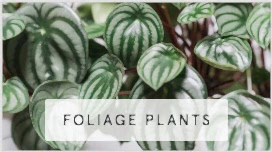Air plants, also known as Tillandsias, have been around for thousands of years, but they are just starting to get a lot of recognition in the world of home plants. This sudden popularity comes as a mystery since they are easy to grow, super low maintenance, and don’t even need soil! By taking in water and nutrients from the air through the special scales in their leaves, air plants stay nourished even in the most inhospitable conditions. Long story short — if you don't have a green thumb on your body, then this is the plant for you.
Nominated as the ultimate urban houseplant by the Chicago Tribune, air plants offer obvious benefits that are now being acknowledged by the public. Thankfully, there is more awareness about these plants’ exotic variations, beautiful colors, ease of care, and affordability. If you need an easy pick for your next favorite house plant, pick up a few air plants for your windowsill, coffee table, fireplace mantle, and wherever else they can enjoy ambient light.

Capitata Peach by buymebess.com
How To Identify an Air Plant
There are around 550 types of air plants and even more hybrid forms. They are diverse in size, shape, and color, with many types of foliage and flowers that range from rounded, long, fuzzy, furry, and spiky. They are easy to identify by their lack of visible roots and can be seen growing without soil on plates and in pots filled with sand or rocks. They can even attach to trendy artifacts like driftwood and seashells to create a stunning visual effect. This offers a truly unique aesthetic that enhances the character of a room’s natural decor.
Air plants are native to Central America, South America, Mexico, and the Southern United States. Some can just be a couple of inches long and others can be as long as three feet. It’s also important to mention that they are classified as epiphytes in the plant world — plants that grow on other plants but not as a parasite. The three most recognized species are xerographica, ionantha, and aeranthos amongst many more species to discover. Find your favorites and place them anywhere in your home for a splash of natural beauty.
Benefits of Air Plants
Air plants aren’t just attractive and easy to care for, they also offer plenty of benefits to homes, offices, and businesses.
Air scrubbing: A 2014 study in Italy revealed that air plants extract more particles from the air than the average plant. This conclusion comes naturally as the air plants have to take everything they need from the air. What you get are highly efficient air scrubbers that are excellent filters. Since indoor environments have some of the highest levels of air pollution due to volatile organic compounds (VOCs) from modern furniture, having many powerful air scrubbers in the house can make you breathe easier. Another study in Brazil discovered that these plants can also remove heavy metals from the air!
Less depression and anxiety: Having plants in the home is also good for one’s mental health. The list of benefits ranges from reducing symptoms of depression to better concentration. This is why green spaces are becoming more vital components of retirement communities, hospitals, and schools. By incorporating some air plants in your home, you can also experience many of these benefits.
Xerographica
Xerographica is an air plant that originated in the forest and commonly grows on tree branches and rocks. It’s known for its silvery-grey leaves that cascade downward to beautiful curls. The entire plant grows to be between 5-6" in diameter. This species needs bright but indirect light and weekly watering. Xerographica isn’t a tree parasite, but only uses branches or limbs as a support to access more sunlight.
As a member of the bromeliad family, it is an excellent indoor plant that keeps levels of indoor air pollution in check. To water your xerographica plant, submerge it in water once every week or two weeks as needed. In the winter, it can be watered every three weeks. After submersion, shake it gently and place it upside down on a towel until it’s completely dry. Then, return it to where it can get its recommended amount of light.
Ionantha
The Ionantha is also known as the “sky plant.” It’s easily identifiable for its fiery red-orange leaves that are thick and succulent. All ionantha varieties are hearty and low-maintenance compared to other air plants, so it’s perfect for anyone who needs a plant that is easy to care for. All the ionantha needs are just some periodic misting and soakings. Since it’s native to Central America and Mexico, it thrives in sunlight so it should be kept in a sunny area. For the best results, ionanthas should be watered in the morning and be gently shaken to remove excess water.
Aeranthos
The aeranthos air plant is native to Brazil and is best known for its bold, vertically growing leaves that create a cone-like pattern. Its refreshing green leaves offer straight, strong lines to diversify with softer textures and florals. They complement other florals and bouquets in the room with ease with their blendable color and texture. It also blooms some incredible purple and pink flowers that you can put on full display in a vase filled with sand or rock. This plant is a wonderful addition to any spot in your home that needs a touch of natural healing.

Air Plants Bundle - Starter on buymebess.com
What You Need for Air Plants
Air plants are easy to grow and maintain. If you have a spray bottle, soaking dish, and absorbent towel, then you can take care of an air plant. You can also spice things up by placing your plants on attractive dishes or interesting artifacts like driftwood, bricks, a trellis, and more. Since they need no soil, there are many places they can thrive even fitting in small apartments and condos.
Whether you need a few terra cotta pots or a personalized residential botanical design session, PlantShed can help you develop the right environment for your new air plants. Find everything you need to complete your indoor plantscape here.













